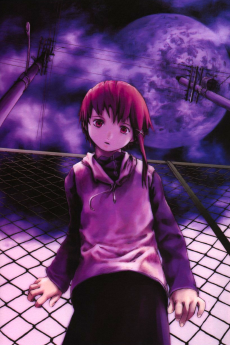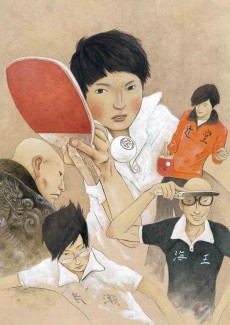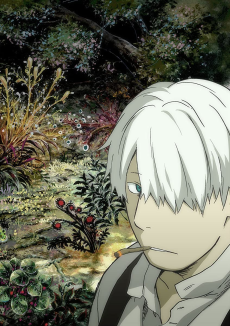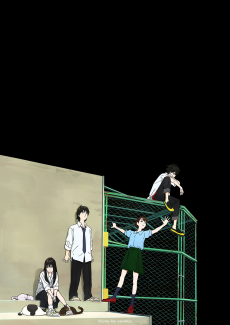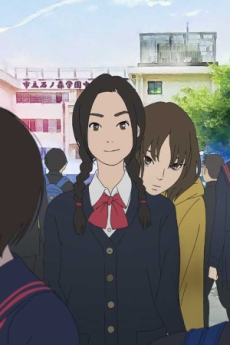AKU NO HANA
STATUS
COMPLETE
EPISODES
13
RELEASE
June 30, 2013
LENGTH
24 min
DESCRIPTION
Kasuga Takao is a boy who loves reading books, particularly Baudelaire's Les Fleurs du Mal. A girl at his school, Saeki Nanako, is his muse and his Venus, and he admires her from a distance. One day, he forgets his copy of Les Fleurs du Mal in the classroom and runs back alone to pick it up. In the classroom, he finds not only his book, but Saeki's gym uniform. On a mad impulse, he steals it.
Now everyone knows "some pervert" stole Saeki's uniform, and Kasuga is dying with shame and guilt. Furthermore, the weird, creepy, and friendless girl of the class, Nakamura, saw him take the uniform. Instead of revealing it was him, she recognizes his kindred deviant spirit and uses her knowledge to take control of his life. Will it be possible for Kasuga to get closer to Saeki, despite Nakamura's meddling and his dark secret? What exactly does Nakamura intend to do with him?
(Source: MangaHelpers)
CAST
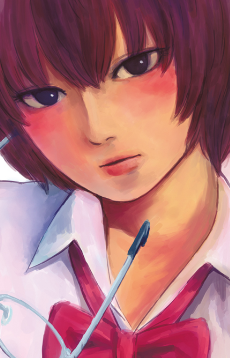
Sawa Nakamura

Mariya Ise
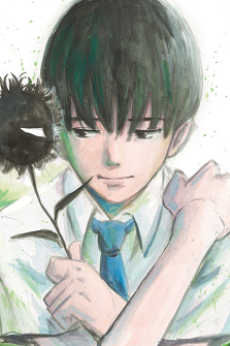
Takao Kasuga
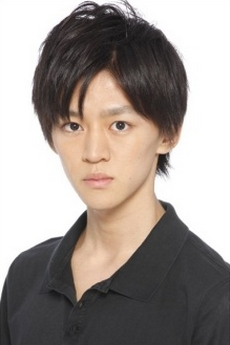
Shinichirou Ueda
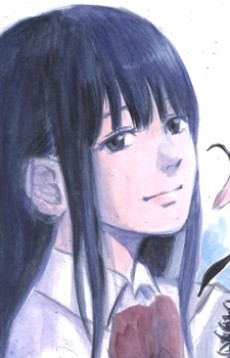
Nanako Saeki
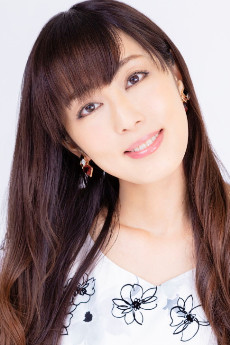
Youko Hikasa
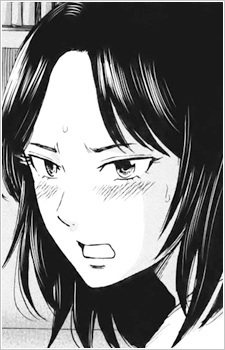
Ai Kinoshita

Ayako Uemura
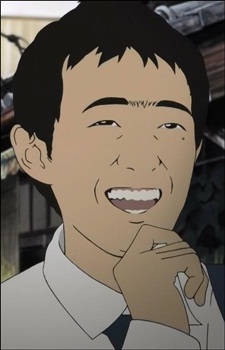
Ken Kojima
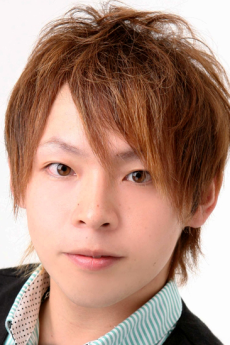
Shinya Hamazoe
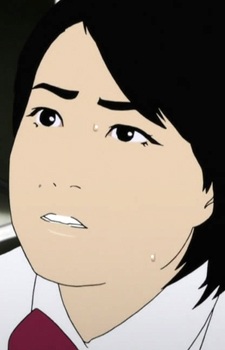
Mayu
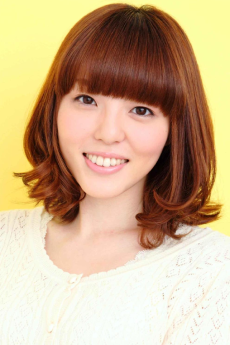
Sayuri Hara
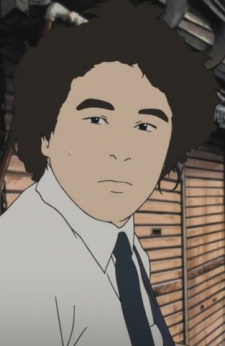
Yamada Masakazu

Katsutoshi Matsuzaki
EPISODES
Dubbed
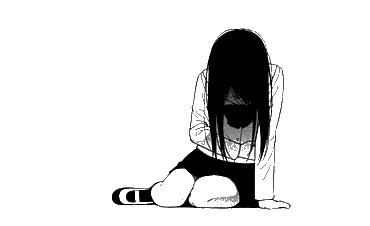
Not available on crunchyroll
RELATED TO AKU NO HANA
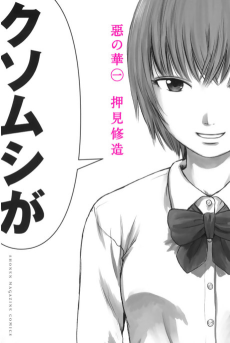 MANGA DramaAku no Hana
MANGA DramaAku no HanaREVIEWS

Govna
76/100A good thing to watch but the take away isn't too special.Continue on AniListAn interesting show with a very creative premise, blending roto'd subject capture with incredibly vibrant backgrounds with a solid grasp on blocking movement within a frame, the show has an incredibly solid base for presenting a narrative that relies on more subtle character acting to communicate mood and tone.
It succeeds quite strongly in presentation, really leaning into its art departments skills to properly create and atmosphere suitable for its tone and message. The sound design is among the best in anime, really putting you into each environment and connecting you inside the subjects perspective and subjectivity. Going further into economical presentation the repeated elements, shots and sounds are not offensively conservative or obtusely reused. You really get the sense that it's building the grammar of the show, with each repeat using itself as a piece of vocabulary instead of existing because they needed a shot to fill that time.
Its key failures is in its script. Key character moments come off as an act of whimsy instead of built up towards, and the overall pace of the narrative arc seems to lend itself far more towards an omnibus presentation than an episodic show. You get the sense that with a larger time window, both in a per-episode sense and in an overall runtime, it would have had the time to get you to understand the head of the character enough so that the snaps felt earned. Instead you're left with the impression that you're not given all the information you needed to have.
I almost feel that the show felt it could get away with some of its omissions because the culture it was made of comes with an understanding of stresses and perspectives that are just not communicated through the show. Perhaps if I came from the same environment as the creators I would have been able to infer those struggles or emotions and superimposed them onto the story during the viewing, but I just lacked that background or desire to insert those anxieties into the character. I wanted to feel the characters anxieties, but instead felt that they were more capsules than personalities.
Overall, it's a very interesting watch. Every presentation decision was clearly thought about lending itself to repeat viewings to really soak in all that they're giving you. However, it doesn't earn the message it presents and betrays some of the more interesting character moments by not properly building towards their decisions, blunting the climaxes.

Saudade
88/100A hauntingly beautiful portrayal of two narcissists' descent into insanity, that brings to mind Oyasumi PunpunContinue on AniListEnvironment Establishment
I want to talk about the anime’s art style and particularly about the environment establishment. I know that the anime’s art style is very different from the manga but the anime’s art style actually suits the environment of the story better than the manga. Every single movement by the characters are so natural and nonchalant and even background characters are shown to be doing something instead of standing still or just walking back and forth. I think fear stems from the feeling we feel when we realize something is happening that shouldn’t be happening. The characters faces are extremely similar to real Japanese faces that it’s creepy because you know that this is just an anime and anime people must have huge eyes and pencil like body structure. And I’m sure that was intended.



The BGM is used mostly for conveying the character’s state of mind and it does that quite well. The environment is designed to represent a cage or a small space. You can feel Kasuga trying to escape this cage. You can sense the oldness that hangs in the environment. You feel as though you’ve been living there you whole life. You can relate to how the people born in that town express nostalgia for that town even though you’ve never lived there. This is mostly due to the scenic shots in anime that don’t glorify the scene it portrays and just shows the old building and walls and neighbourhoods as something normal... something lived in. The sky is almost always cloudy and gloomy further enforcing this idea that Kasuga is like a rat put in a dark maze with a very low ceiling. He does nothing but run into the maze, randomly choosing paths hoping that he will escape.
Characters
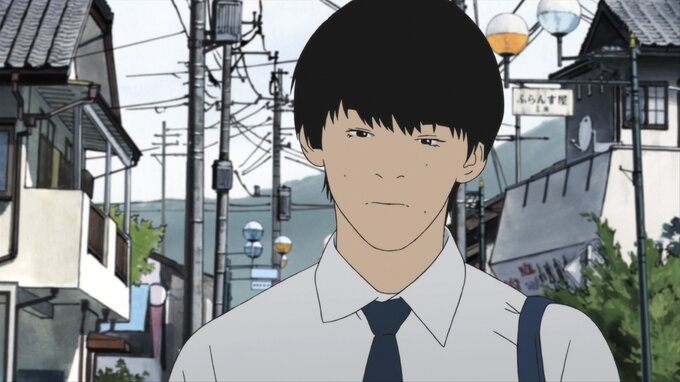
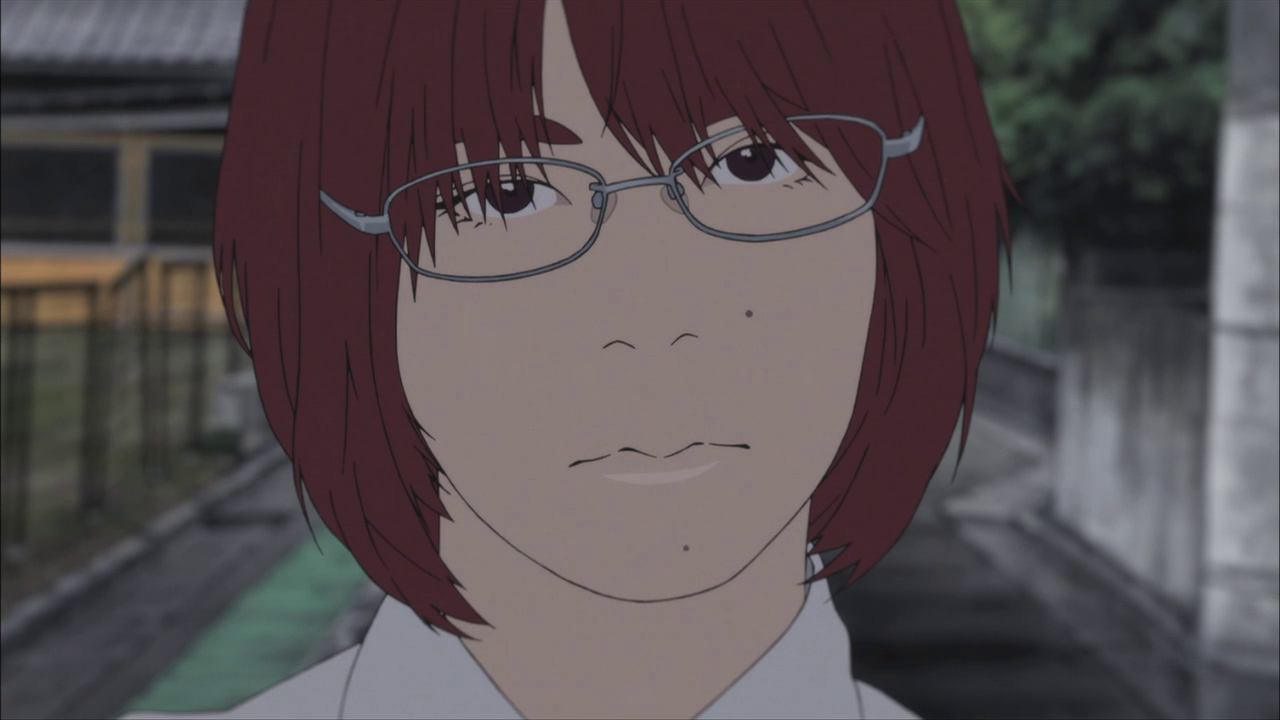
Kasuga is someone we’ve all seen and maybe interacted with in life. You know that one guy who always trash talks about book adaptations? Says that the novel was better, and thinks that reading books makes him a superior human being. Kasuga is that guy. He wants everyone to know that he reads books and therefore is someone who deserves attention. He in fact believes that if Saeki knows that he reads books she will fall for him. He also unironically shouts to his classmate “Shut up, you don’t know anything. You can’t even understand a line of the kind of literature that I consume”. He even goes into monologues in his mind reciting the lines of the book The Flowers of Evil. He is so narcissistic. He is so obsessed with The Flowers of Evil that he believes the book portrays his mind and his way of being. He even has a picture of the author in his room. If an anime fan turned pathetic is a weeaboo a bibliophile turned pathetic would be this guy. But this unkind and brutally honest portrayal of him helps us keep our objectivity and not feel anything for him when something happens. You just see characters acting out of various emotions and don’t sympathize with them.
The anime will be very relateable to those who have done something in school that you hope no one finds out. You know that feeling when something you’ve done in school is being talked about but no one knows that it was you who did it. That rush of adrenaline you feel. Your heart beats so much that you feel as though it touches your rib cage each time it beats. That feeling – that fight or flight feeling – has been conveyed very accurately.
Themes And Character Motives


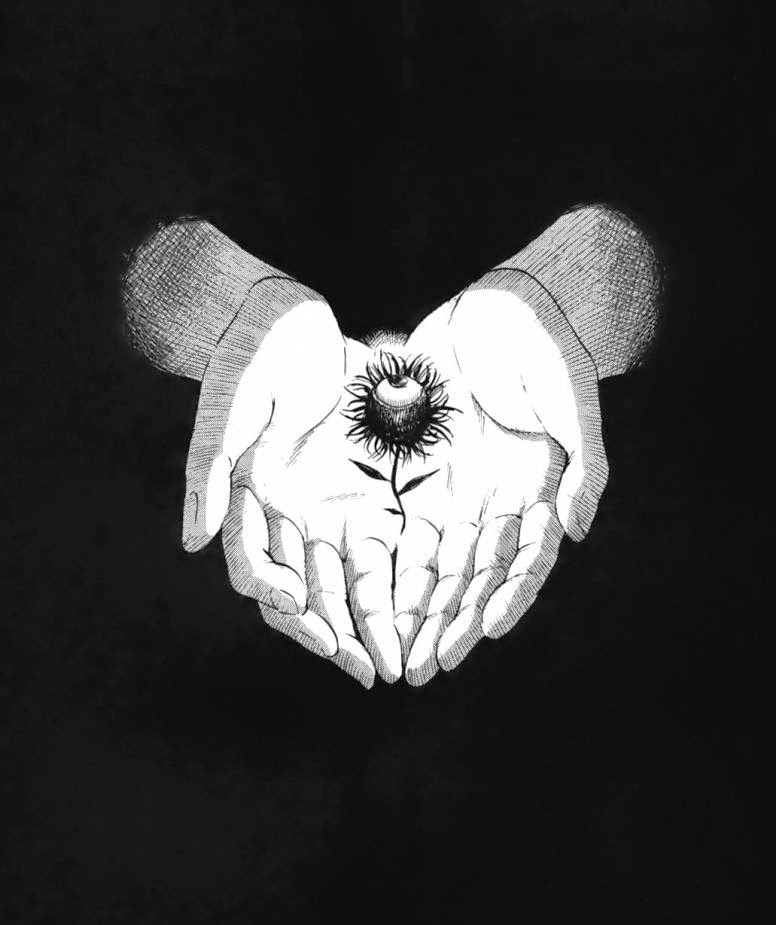
The entire anime can be said to portray the relationship between Kasuga and Nakamura. Both of these characters have motives that stem from the same feeling. They both think that the town that they live in is dull and boring and have an innate feeling that they we’re born to do something great and therefore don’t belong in this town. Kasuga feels as though since he has been reading books that are considered to be from a very high level of literature he is superior and the people of the town are therefore dull compared to him. He feels caged by the mountains around the town, and feels as though he can achieve his ‘superior destiny’ if he crosses the hill and gets out of the town into the ‘interesting’ outer world where people will recognize and appreciate his true value.
Nakamura on the other hand doesn’t consider herself as superior or different from the other people of the town. In fact she believes she is just the same as those around her but she just doesn’t act like others. She believes everyone is a hentai (deviant) at heart but just act so that they can fit in with society. This is why she develops an interest in Kasuga when she sees him stealing Saeki’s gym clothes. She thinks she has now witnessed a true hentai and someone who acts out of their true will. She fetishes about Kasuga being an hentai and derives pleasure from the fact that she can make someone do all the things that they actually want to do but don’t want to do because of societal constructs like morality which she believes just prevents people from being their own self and promotes false behaviour. She sees Kasuga as someone who further cements her views of the world and therefore pushes him further to be an hentai. Because in Nakamura’s mind Kasuga being more of an hentai means her worldview is more justified. So Nakamura can be seen as someone having an ideological crisis who grasps and propagates anything that reinforces their view on life and society.
This relationship is so intense and affects everyone in their life in some way or another. They are both trying to break free from society so that they can be their true selves even though in the process they both lose their sanity and peace of mind.
This anime is the most underrated anime that I have watched. I was constantly reminded of Oyasumi Punpun watching this because both share a central theme – The Loss Of Innocence. Kasuga realizes that he is not someone who he believed he was, that reading books is not something that makes you any different from other ‘dull’ people and all humans are just – in Nakamura’s words – ‘pieces of shit hentais’.

Ciaora39
31/100Daring animation masked with laughable writingContinue on AniListWhenever people watch a film or show, regardless of whether it’s anime or not, they want to be enticed into a deep and complex world full of mystery and wonder that they can solve for the benefit of their humanity. It seems as though Aku no Hana was meant to be something that was going to be the “change” some people were looking for in the wake of entertainment controlling the masses. But boy, did it fail at doing that on almost all accounts.
Let's reveal the elephant in the room, the animation. It is flawed, but not to the extent where it should be castrated out of someone’s psyche after viewing the first episode. For starters, the animation that the studio decided to use is called rotoscoping, a style of animation where people are filmed in live action and animators draw over the film frame-by-frame. Considering that this is the first anime show to do this animation style, how is the quality of the rotoscoping? Not too well, that’s for sure. The lip-syncing is atrocious, and the facial expressions are devoid of any character. They don’t fit well with the emotions that the characters are trying to convey, and given how low the budget was, the animation isn’t very fluid in most places. Though these flaws are mentioned, the show isn’t necessarily unwatchable due to the average animation, so it gets a slight pass in this department.
With this in mind, however, the art design of the background in the show’s setting is truly spectacular. The grime and rust from the buildings and the dark tone of the outside world succeed in enveloping this dark, depressing story. It fits with the style Aku no Hana is trying to capture, and its effectiveness is relatively good. Another thing that also improves Aku no Hana’s mood is the music. Its subtle ambient and minimalist influenced sound is one of the most beautifully crafted scores that I’ve enjoyed listening to.
On a technical level, the show is mixed with good music and art but average animation, but how does it compare to the narrative and writing? Not too well, that’s for sure. For one, the characters and how they are written are not well developed or fully realized with anything happening with the plot. To address this even further, the relationships between the protagonist Kasuga and our two main heroines, Nakamura and Saeki, are as well put together as one could get from a high schooler’s attempt at writing a story as this, a bad one at that. What makes these characters so bad in terms of a writing perspective is how poorly paced it gives us a clear indication that Kasuga has a bond with either Nakamura or Saeki. With Kasuga and Nakamura, there is no chemistry. They play off as a couple of degenerates who spout out vapid angsty monologues towards one another whenever they are on screen.
Kasuga himself is not an enticing protagonist to be on-screen. Just because you make him this Holden Caulfield type of character where he is obsessed with a dark poetry book doesn’t make him have any more depth than any other character in the show. Are we to sympathize with him just because he acts pessimistic about the world around him with his pseudo-intellectual jargon? Not if it’s done with careful precision in Kasuga’s archetype, which is not the case in Aku no Hana.
Nakamura and Saeki are two other characters who are unfortunately not spared in mediocre character writing. The romantic development between Kasuga and Saeki was rushed to the point where we only see very few inclinations that they are a couple. We get two awkward dates and a moment where she invites him into his room. Not only that but Saeki’s reasons for liking Kasuga are not at all convincing to the slightest degree. With all of the things Kasuga did or forced, in this case, to Saeki’s property, any ordinary girl would quickly never speak to him again. Still, just because the writers want to keep the story going, they’ll have to hope that anyone with half a brain would buy into this—no explanation for Saeki’s reasoning for liking Kasuga.
Then there’s Nakamura, Kasuga’s “sidekick” in the show. As you might predict, she is about as explained throughout the show as any other character. This is, of course, the intention because Nakamura is something that we should be wary and suspicious about whether she’s evil or not. Once she forms a contract with Kasuga, the only thing we get out of Nakamura is that she is nothing more than the show’s attempt at pouring empty melodrama into the mix to make the plot seem too deep than what it already is. Her primary goal to the plot’s theme is never given any deep context other than the fact that she thinks the whole world is bullshit and should be destroyed. If you want to provide me with an existential angst plot device, try to deliver a better explanation than just a one-dimensional written one. The character can be portrayed in a reasonably sympathetic light. Unfortunately, Nakamura just doesn’t cut out to be a deep convincing anti-hero with how poor the writing is.
While the show's tone is solid, the atmosphere tries too hard to be frightening to the point where it almost does the opposite effect of what it was initially trying to impose. Whenever there is a faint rumbling noise in the background that’s supposed to resemble a heartbeat, that is hardly effective in establishing a mood, or whenever the music starts to grow in its dynamics with a dark droning noise that is unsettling in a wrong way. What’s funny is that some of the build-ups in some of the scenes are unnecessary and fail to capture any fear. Once you do it multiple times throughout the show, it loses its momentum quickly, and all you are left with is just an empty white noise in the background.
It’s not often I talk about the actual “acting” rather than the voice acting in this show. While good in a few areas, the acting is often overly dramatized and doesn’t reach that greatness of any drama TV show you could be watching right now. Actors constantly spout out their lines and try to carry out as much emotion as possible in scenes that don’t seem as though it was needed in the first place, such as one that involves a bathroom area.
The numerous plot holes drag down the plot from making it convincing to anyone watching. Usually, plot holes can be forgiven if they are tiny to where they are not noticeable to ruin the show's flow. With Aku no Hana, many coincidences can easily be accounted for lazy writing, such as no one noticing the blackboard writing being blocked out the day after the vandalism scene. Anyone could have easily deciphered what the saying was in two seconds flat.
In the short scheme of things, Aku no Hana is just a failed experiment that probably never should have been fully realized given its source material. In all honesty, the original manga’s story is quite fascinating. If only they had hired more competent writers to fill in the wide gap that crippled Aku no Hana’s chances of becoming an intriguing psychological drama. It wouldn’t be a shock to call this a “wasted opportunity” given how the creators were ballsy in making it with the rotoscope technique; it just goes to show when you want to do something “different,” you might want to focus more on your writing structure than your artistic integrity.
Grade: D+
SIMILAR ANIMES YOU MAY LIKE
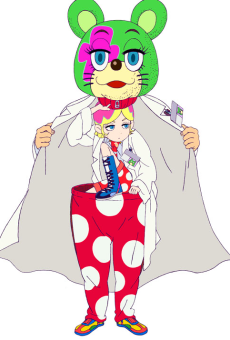 ANIME ComedyKuuchuu Buranko
ANIME ComedyKuuchuu Buranko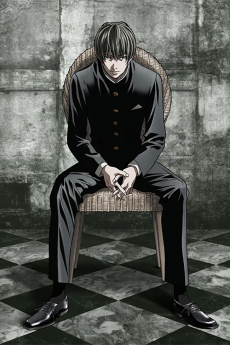 ANIME DramaAoi Bungaku Series
ANIME DramaAoi Bungaku Series ANIME DramaKuzu no Honkai
ANIME DramaKuzu no Honkai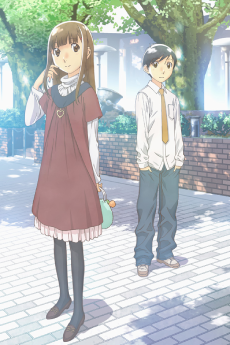 ANIME DramaHourou Musuko
ANIME DramaHourou Musuko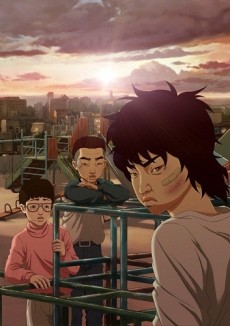 MOVIE DramaDwaejiui Wang
MOVIE DramaDwaejiui Wang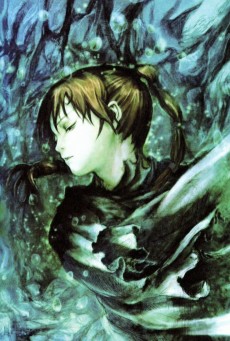 ANIME ActionTEXHNOLYZE
ANIME ActionTEXHNOLYZE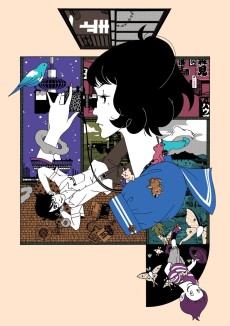 ANIME ComedyYojouhan Shinwa Taikei
ANIME ComedyYojouhan Shinwa Taikei
SCORE
- (3.35/5)
TRAILER
MORE INFO
Ended inJune 30, 2013
Main Studio ZEXCS
Favorited by 1,047 Users

